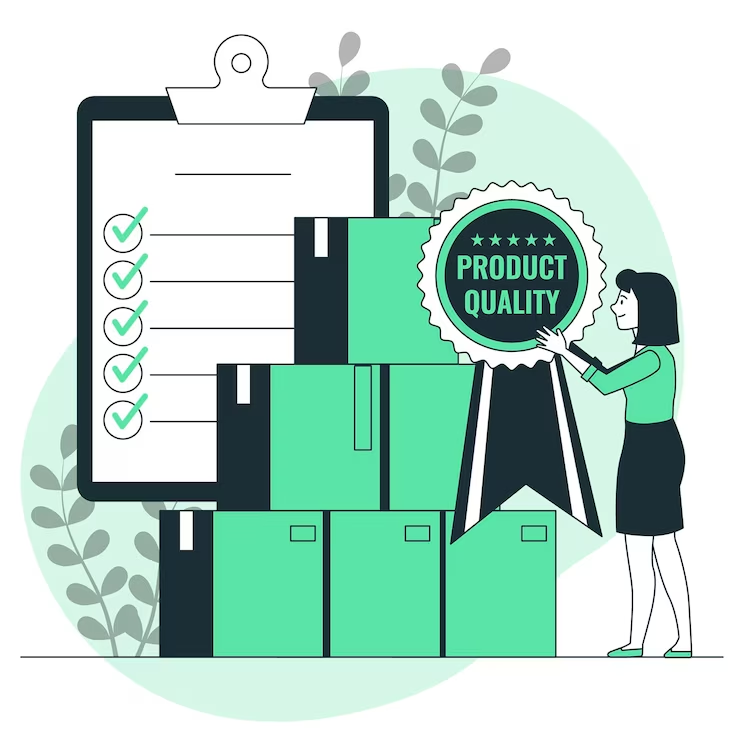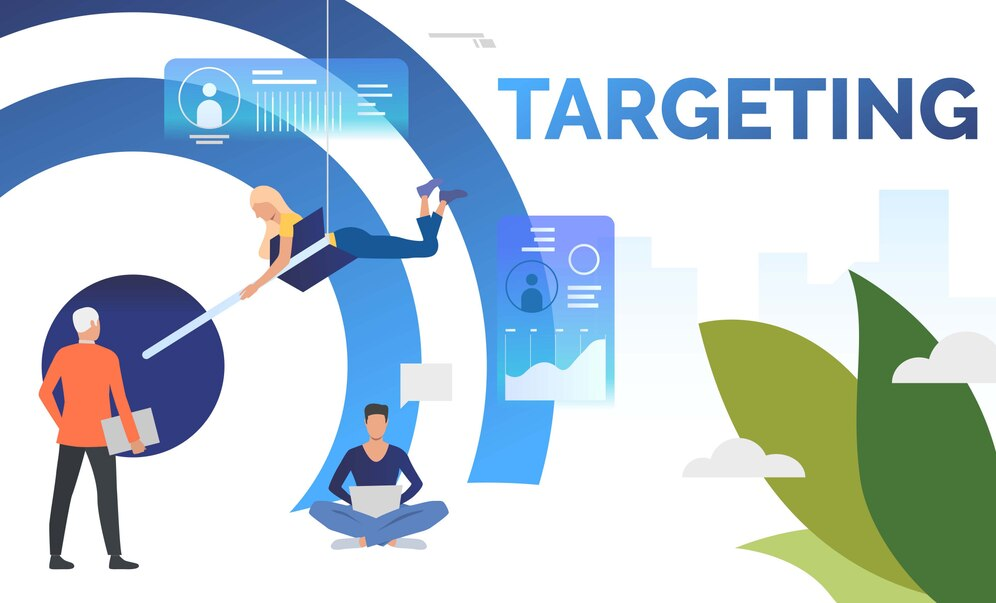Discovering the Power: 6 Ecommerce Secrets for Market Domination

In this article, we embark on a journey to unveil the 6 eCommerce secrets that hold the key to market domination. These secrets are more than mere tactics; they are the cornerstones upon which thriving eCommerce empires are built. With these insights, businesses can transcend mediocrity, navigate the complexities of the digital marketplace, and forge a path to unrivaled success in the world of online commerce
What is eCommerce?
eCommerce, an abbreviation of electronic commerce, refers to the buying and purchase of goods or services over the internet or through electronic means. It involves online transactions between businesses (B2B), between businesses and consumers (B2C), or between consumers (C2C). eCommerce has revolutionized the way commerce is conducted, allowing people to engage in buying and selling activities without the need for physical locations or face-to-face interactions.
Read more: What is B2B and B2C? Differences between B2B and B2C

The importance of eCommerce in today’s business landscape
The importance of eCommerce in today’s business landscape cannot be overstated. It has fundamentally transformed the way businesses operate and has become an integral part of the global economy. Here are several key reasons why eCommerce is crucial in the contemporary business environment:
-
Global Reach: eCommerce allows businesses to reach a global audience. Unlike physical stores, an online presence is not constrained by geographical limitations. This opens up opportunities to sell products or services to customers worldwide.
-
24/7 Accessibility: Online stores are open 24/7, providing convenience for customers to shop at any time, including evenings, weekends, and holidays. This flexibility caters to the diverse schedules and preferences of modern consumers.

-
Cost Efficiency: eCommerce businesses often have lower operational costs compared to brick-and-mortar stores. Expenses related to physical locations, utilities, and in-person staff can be significantly reduced, leading to improved profit margins.
-
Personalization: eCommerce platforms can leverage customer data and analytics to provide personalized shopping experiences. This includes tailored product recommendations, marketing messages, and special offers based on individual preferences and behavior.
-
Data Insights: Businesses can gather valuable data on customer behavior, preferences, and interactions. This data can be used for market research, targeted marketing campaigns, and product development, allowing for data-driven decision-making.
-
Scalability: eCommerce businesses can scale up more easily than traditional businesses. With the right infrastructure, handling increased website traffic and expanding to new markets can be accomplished relatively quickly.
-
Convenience: From the perspective of consumers, eCommerce offers unparalleled convenience. They can compare prices, read reviews, and make purchases from the comfort of their homes or on-the-go using mobile devices.
-
Diverse Payment Options: eCommerce enables many payment options, including credit cards, digital wallets, bank transfers, and more. This flexibility makes it easier for customers to complete transactions.
-
Reduced Barriers to Entry: Starting an eCommerce business is often more accessible and cost-effective than establishing a physical store. This has led to a surge in entrepreneurship and the growth of small and niche businesses.
-
Adaptation to Trends: eCommerce businesses can quickly adapt to changing consumer trends and market conditions. They can introduce new products, adjust pricing, and modify marketing strategies in real-time to stay competitive.
6 eCommerce secrets for market domination
eCommerce secret 1: High-quality product listings
Creating high-quality product listings is indeed a crucial secret to success in eCommerce. Your product listings play a significant role in attracting and converting customers. Here are some key elements to focus on when creating high-quality product listings:
-
Clear and Detailed Product Descriptions: Provide comprehensive and accurate descriptions of your products, including features, specifications, and benefits. Use clear and concise language that is easy for customers to understand. Highlight unique selling points and what sets your product apart from competitors.
-
High-Resolution Images and Videos: Use high-quality images that showcase your product from multiple angles. Include zoom-in functionality to allow customers to get a closer look at the product. Consider using videos to demonstrate how the product works or to show it in action.
-
Proper Product Categorization and Tags: Organize your products into logical categories and subcategories to make navigation easier for customers. Use relevant tags and keywords to improve searchability within your eCommerce platform and search engines.
-
User-Generated Content: Encourage customers to leave reviews, ratings, and photos of the product in use. Display user-generated content to build trust and provide social proof.

-
Product Availability and Stock Information: Clearly indicate whether the product is in stock or on backorder. Display the estimated delivery time if the product is out of stock.
- Cross-Selling and Upselling: Suggest related or complementary products to encourage customers to explore more options. Use persuasive copy to explain the benefits of purchasing additional items.
-
Customer Reviews and Ratings: Showcase positive customer reviews and ratings prominently. Respond to negative reviews professionally and offer solutions to customer issues.
-
Mobile Optimization: Ensure that product listings are optimized for mobile devices with fast loading times and respond to negative reviews.
- SEO Optimization: Use relevant keywords in your product titles, descriptions, and meta tags to improve search engine visibility.
- A/B Testing and Optimization: Continually test and optimize your product listings based on data and customer feedback. Experiment with different images, titles, and descriptions to find resonates best with your target audience.
eCommerce secret 2: Targeted digital marketing
Effective digital marketing is essential for eCommerce success, but the real secret lies in targeting the right audience with precision. Here’s how to achieve targeted digital marketing:
-
Customer Segmentation: Divide your customer base into segments focused on demographics, behaviors, and preferences. Create detailed buyer personas to understand your ideal customers.
-
Data Analytics: Utilize data analytics tools to gather insights about customer behavior and engagement. Analyze which marketing channels and strategies are most effective in driving conversions.
-
Search Engine Optimization (SEO): Optimize your website and product listings for search engines. Target relevant keywords and phrases to increase organic traffic.
-
Content Marketing: Develop high-quality, informative content that aligns with customer interests and needs. Create blog posts, videos, infographics, and other content formats to engage your audience.
-
Email Marketing: Divide your email list into segments and then send personalized emails and targeted email campaigns. Use automation to send abandoned cart reminders, product recommendations, and promotional offers.
-
Social Media Advertising: Choose the appropriate social media platforms tailored to your target audience. Create targeted ad campaigns based on demographics, interests, and behaviors.

-
Pay-Per-Click (PPC) Advertising: Use platforms like Google Ads and Bing Ads to display ads to users actively searching for your products. Optimize landing pages for maximum conversions.
-
Retargeting and Remarketing: Implement retargeting campaigns to re-engage visitors who abandoned their carts or visited specific product pages. Show ads to previous customers with personalized offers to encourage repeat purchases.
-
Influencer Marketing: Cooperating with influencers in your niche to reach their engaged audience. Ensure influencers align with your brand and product values.
-
Data Privacy and Compliance: Stay compliant with data privacy regulations like GDPR and CCPA. Gain explicit consent for data collection and use in marketing efforts.
-
Performance Tracking: Monitor the performance of your marketing campaigns in real-time. Use key performance indicators (KPIs) like conversion rate, click-through rate, and return on ad spend to assess success.
-
Budget Allocation: Allocate your marketing budget strategically based on the channels and tactics that yield the highest ROI. Adjust spending as needed to maximize profitability.
eCommerce secret 3: User-friendly website design
A user-friendly website design is a cornerstone of successful eCommerce. It enhances the overall customer experience, encourages conversions, and promotes customer loyalty. Here are key elements to consider for creating a user-friendly eCommerce website:
-
Intuitive Navigation: Organize your website into logical categories and use clear, easy-to-understand menus. Implement breadcrumbs and filters to help users find products quickly.
-
Mobile Responsiveness: Make certain that your website is completely responsive and operates smoothly on a wide range of devices and screen dimensions. Use a mobile-first approach when designing your site.
-
Fast Loading Speed: Optimize images and code to minimize loading times. Use content delivery networks (CDNs) to distribute content efficiently.
-
Clear Call-to-Actions (CTAs): Use prominent and visually appealing buttons for actions like “Checkout” and “Add to Cart.” Make it easy for users to take the next step in the buying process.
-
User-Friendly Product Pages: Provide detailed product information, including specifications, pricing, and availability. Include high-quality images with zoom functionality. Use clear and concise product titles and descriptions.
-
Smooth Checkout Process: Minimize the number of steps required to complete a purchase. Offer guest checkout options to reduce friction for first-time customers. Display a progress indicator during checkout to keep users informed.
-
Secure Payment Options: Ensure the security of payment transactions with SSL certificates and secure payment gateways. Display trust badges and reassure customers about the safety of their data.
-
User-Friendly Search Functionality: Implement an efficient search bar with autocomplete suggestions and filters. Use predictive search to help users find products even with typos.
-
Customer Reviews and Ratings: Showcase product reviews and ratings prominently on product pages. Enable users to leave reviews and provide feedback.
-
Personalization and Recommendations: Use algorithms to offer personalized product recommendations based on user behavior. Show related products or frequently bought together items to encourage upselling.

eCommerce secret 4: Customer relationship management
Customer Relationship Management (CRM) in eCommerce involves the use of technology, strategies, and tools to manage and nurture interactions with your customers throughout their entire journey, from initial contact to post-purchase support. It’s about understanding your customers, anticipating their needs, and delivering personalized experiences to enhance their satisfaction and loyalty.
- Customer Segmentation: Segment your customer database based on demographics, purchase history, behavior, and preferences. Use segmentation to send personalized marketing messages and offers.
-
Personalized Communication: Send personalized emails, product recommendations, and promotions based on customer preferences and past purchases. Use the customer’s name and relevant details to create a personal connection.
-
Email Marketing: Use email marketing automation to nurture leads and engage existing customers. Send welcome emails, abandoned cart reminders, order confirmations, and post-purchase follow-ups.
- Loyalty Programs: Create a loyalty program for repeat customers with discounts, exclusive offers, or loyalty points. Encourage customers to join your program and engage with it regularly.

- Customer Feedback: Solicit feedback through surveys, reviews, and direct communication channels. Act on feedback to improve your products and services.
-
Social Media Engagement: Engage with customers on social media platforms by responding to comments, questions, and reviews. Share user-generated content and customer success stories.
-
Live Chat and Chatbots: Implement live chat support or chatbots to provide immediate assistance to customers. Address inquiries, resolve issues, and guide users through the shopping process.
-
Personalized Product Recommendations: Use recommendation algorithms to suggest products based on a customer’s browsing and purchase history. Highlight cross-sell and upsell opportunities.
-
Customer Retention Campaigns: Develop retention-focused marketing campaigns that target existing customers. Offer exclusive discounts or loyalty rewards to keep them engaged.
- CRM Software: Invest in CRM software to manage customer data, track interactions, and automate marketing workflows. Use CRM analytics to gain insights into customer behavior and preferences.
eCommerce secret 5: Emphasize the long-term worth of your customers
Focusing on the long-term value of your customers, commonly known as (Customer Lifetime Value CLV), is a vital secret to eCommerce success. By prioritizing customer retention and nurturing relationships over time, you can maximize your revenue and market domination. Here’s how to emphasize the long-term worth of your customers:
-
Segmentation and Personalization: Segment your customer base to understand the varying CLV of different groups. Create personalized experiences and offers for high-value customers.
-
Loyalty Programs: Develop and promote loyalty programs that incentivize repeat purchases and customer engagement. Use tiered rewards to encourage customers to move up the loyalty ladder.
-
Customer Engagement: Continuously engage with your customers through social media, email marketing, and other communication channels to transmit tailored recommendations and pertinent content.
-
Exceptional Customer Service: Provide top-notch customer support to resolve issues promptly and ensure a positive experience. Using tools like small business VoIP can streamline communication and help you go above and beyond to surpass customer expectations.
-
Post-Purchase Follow-Up: After purchase, follow up with customers to ensure their satisfaction. Ask for feedback and promptly resolve any concerns or issues.
-
Retention Marketing Campaigns: Develop and execute marketing campaigns specifically aimed at retaining existing customers. Use personalized offers, reactivation campaigns, and win-back strategies.

-
Cross-Selling and Upselling: Identify opportunities to cross-sell complementary products or upsell to higher-value items. Suggest relevant add-ons during the purchase process and post-purchase.
-
Subscription Models: Consider offering subscription services or products that generate recurring revenue. Subscriptions can significantly increase CLV over time.
-
Data-Driven Insights: Use data analytics to understand customer behavior and purchasing patterns. Identify trends that can inform strategies to increase CLV.
eCommerce secret 6: Data analytics and optimization
Data analytics and optimization are essential secrets for eCommerce success. Leveraging data-driven insights allows you to make well-informed decisions, enhance your operations, and maintain competition. Here’s how to effectively use data analytics and optimization in your eCommerce strategy:
-
Data Collection and Integration: Gather data from various sources, including your website, CRM software, social media, and marketing campaigns. Integrate data from different platforms to create a holistic view of customer behavior.
-
Customer Behavior Analysis: Analyze customer behavior patterns to understand how visitors interact with your website. Identify drop-off points in the customer journey and optimize those areas.
-
Sales Funnel Analysis: Track the entire sales funnel, from initial site visits to conversions. Monitor key metrics like conversion rate, click-through rate, and bounce rate.
-
A/B Testing: Conduct A/B tests on various elements of your website, such as CTAs, product pages, and checkout processes. Use the results to make data-backed improvements.
-
Personalization: Implement personalized product recommendations and content based on customer data and browsing history. Tailor marketing campaigns to individual customer segments.

-
Inventory Management: Use inventory data to optimize stock levels and reduce overstock or out-of-stock situations. Implement demand forecasting to improve inventory accuracy.
-
Pricing Strategy Optimization: Analyze pricing data and adjust your pricing strategy based on customer behavior, competitor pricing, and market trends. Experiment with dynamic pricing to maximize revenue.
-
Marketing ROI Analysis: Calculate the return on investment (ROI) for your marketing campaigns. Allocate resources to channels and strategies that generate the highest ROI.
-
Mobile Optimization: Monitor mobile traffic and optimize the mobile user experience. Ensure fast loading times and responsive design for mobile devices.
-
Conversion Rate Optimization (CRO): Focus on improving the conversion rate at each stage of the sales funnel. Test different design elements, copy, and CTAs to boost conversions.
Read more:
The final word
By staying informed, being adaptable, and consistently applying these secrets, your business can position itself as a formidable force in the eCommerce arena, not just for today but well into the future. As the digital landscape continues to evolve, remember that the real secret lies in your ability to innovate, connect with your audience, and provide exceptional value qualities that will truly propel your eCommerce venture to unprecedented heights of success.






![Top 20+ Must-have Shopify Apps for 2025 [Free & Paid] - Mageplaza](https://cdn2.mageplaza.com/media/blog/must-have-shopify-apps/top-must-have-shopify-apps.png)
![[2025 Updates] Top 10+ Upsell Apps for Shopify - Mageplaza](https://cdn2.mageplaza.com/media/blog/best-upsell-shopify-app/cover.png)